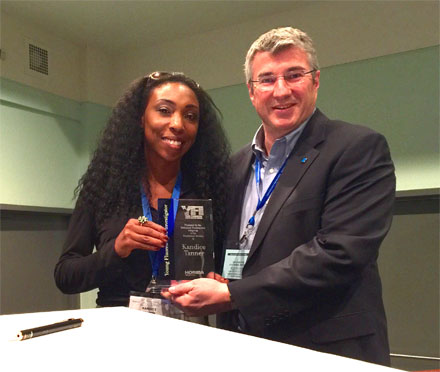
Tanner Awarded Horiba Young Fluorescence Investigator Award
EDISON, N.J., April 22, 2016 — Kandice Tanner of the National Institute of Health (NIH) has been awarded Horiba Scientific’s annual Young Fluorescence Investigator Award.
Tanner is an investigator in the Laboratory of Cell Biology in the NIH Center for Cancer Research in Bethesda, Md., where she integrates concepts from molecular biophysics and cell biology to learn how cells and tissues sense and respond to their microenvironment for the design of therapeutics and cellular biotechnology. She was recruited to the institute as a tenure-track investigator in 2012.

Kandice Tanner receives Horiba Scientific’s Young Fluorescence Investigator Award. Courtesy of Horiba Scientific.
The award is given to a researcher who has been nominated by their peers for significant advancements and contributions in, or using, fluorescence methodologies. The candidate must be a Ph.D. and a pretenured faculty or a junior level investigator working in the field of fluorescence.
Horiba provides instruments and systems for applications ranging from automotive R&D, process and environmental monitoring, in-vitro medical diagnostics, semiconductor manufacturing and metrology, to a broad range of scientific R&D and quality control measurements.
/Buyers_Guide/HORIBA/c6267